If you’ve decided you want to stretch your own canvas, you’ll need to select your materials. The bars you stretch the canvas on are just as important as the canvas for determining the final product. You may wish narrow bars so that the painting is easier to frame or deep bars so that it looks good unframed. If you are planning a very large canvas then you will want to consider the tension that all that tight canvas will exert on the bars – your canvas could be pulled out of shape – so stronger bars (thicker or with aluminium) would be appropriate. Here are some things to consider when choosing your stretcher bars.
What are Stretcher Bars?
All stretcher bars differ from plain timber in that they are shaped to have a flat back and a slanted front that has a higher edge along the outside of each bar length. This may be accomplished with bars that slope downward toward the centre of the frame or by adding a raised lip around the edge. You staple on the flat, back side and the canvas is stretched so that it floats over the slanted front and only touches the outer rim. This is to prevent a ridge of paint forming when the canvas comes in contact with the bar when the brush pushes the canvas towards the bar as you paint.
Characteristics of each type
The Professional and Museum ranges are the bars that most artists use. The Alu-Pro range of bars is for those artists who wish to invest in the highest quality bars.
For very large sizes you will need to choose thicker bars for strength, so the thinner bars aren’t available in the largest sizes.
The ‘depth’ refers to the profile, the measurement of how far the canvas will protrude from the wall when hung as a painting.
These bars can be purchased in pairs for stretching your own canvas and they are also used in our ready-made canvases and bespoke canvases.
The Jackson’s Professional Range
wooden in 3 depths – 18mm, 21mm, 43mm
- Strong – but for larger canvases where the canvas tension will be greater, the thicker 43mm bars will be stronger than the narrower.
- The 18mm depth is available in inch sizes, in 2-inch increments up to 40 inches. These 2 inch size bars (and the 21mm bars as well) are for artists who might need to match an inch-sized frame or an existing inch-sized painting where cm-sized canvases would be in partial fractions of inches, or for those who prefer Imperial measurements.
- The 21mm depth is available in inch sizes, in 2-inch increments up to 54 inches. These two narrow bars are not available in as long lengths as the deeper bars because they are not strong enough to be be that long without warping.
- The 43mm depth is available in 10cm increments up to 200cm long.
- Strong interlocking corners and a space for a wooden corner wedge.
- Made of wood – PEFC Certified kiln-dried fir.

The Jackson’s Museum Range
wooden in 2 depths – 20mm, 35mm
- Stronger because of the layers of laminated wood.
- Both depths are available in 5cm increments up to 200cm long.
- Strong interlocking corners and a space for a wooden corner wedge.
- Made of layers of wood – PEFC Certified kiln-dried pine.

The Jackson’s Alu-Pro Range
wood and aluminium in 2 depths – 25mm, 45mm
- The strongest because of the aluminium.
- Both depths are available in 10cm increments up to 200cm long.
- Corners need connector pieces to join them, which can be tightened in the same way that wooden wedges are used.
- Made of strong, light aluminium with a strip of wood on for stapling.
- Wood responds to temperature and humidity changes, it swells when it gets warm or moist and shrinks when it cold or dry. Aluminium does not change its dimensions. This stability means the canvas stretched across the bars is not subject to changes in tension and the paint layer should not be pushed and pulled so it will be less likely to crack over time. The patented design creates a perfect framework for canvas stretching, free from deformation, twist and warp. These are so sturdy that cross bars are optional, at any size.

Custom sizes
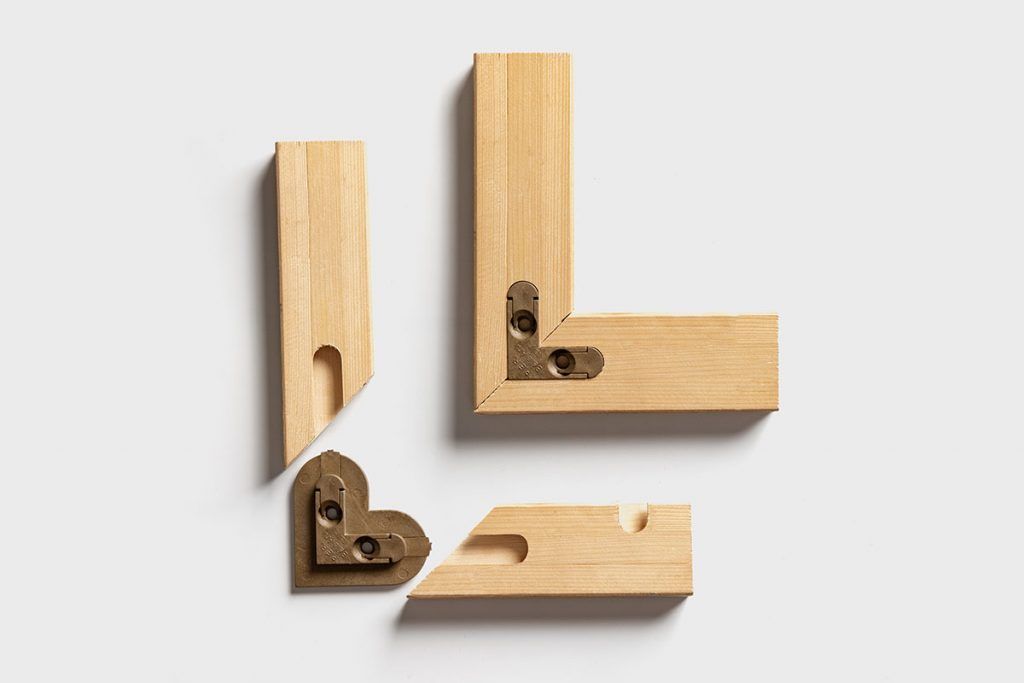
If you need a size that is not available as standard, Jackson’s can cut all three types of stretcher bar to bespoke lengths. The order will need to be placed on the phone. The price is the price of the bar that is one size larger on our price list as yours will be cut down from that – plus £10 per stretcher frame for the four new corner dovetail joiners, as these custom-cut bars use a different joining system.
Centre bar and cross bar – for added rigid strength to help prevent warping (and useful as a carry handle)
If a stretcher bar frame is very large it is a good idea to give it additional support by adding a bar across the back (a centre bar) or two bars across the back that cross one another (a cross bar). You can add a centre bar for strength (and to have a handle on the back) at any size that there is a slot in the bar to accomodate it.
You will need to use a centre bar that fits the stretcher bar – there is a different size for each size of bar – so there are 7 sizes/types of centre bars.
If the stretcher bar can only accommodate a centre bar and not a cross bar, or if you only need the added strength of a single centre bar, choose the bar to go across the width, not the length. So a 50x100cm canvas with a single centre bar would have a 50cm bar across the width. This provides more stability than if the centre bar were to go lengthwise.
For the 18mm and 21mm Professional stretcher bars the use of a centre bar is recommended when any side of the canvas exceeds 30 inches. The canvas can only accommodate a centre bar, they are not made to use a cross bar. Sizes starting at 28 inches have centre bar slots.
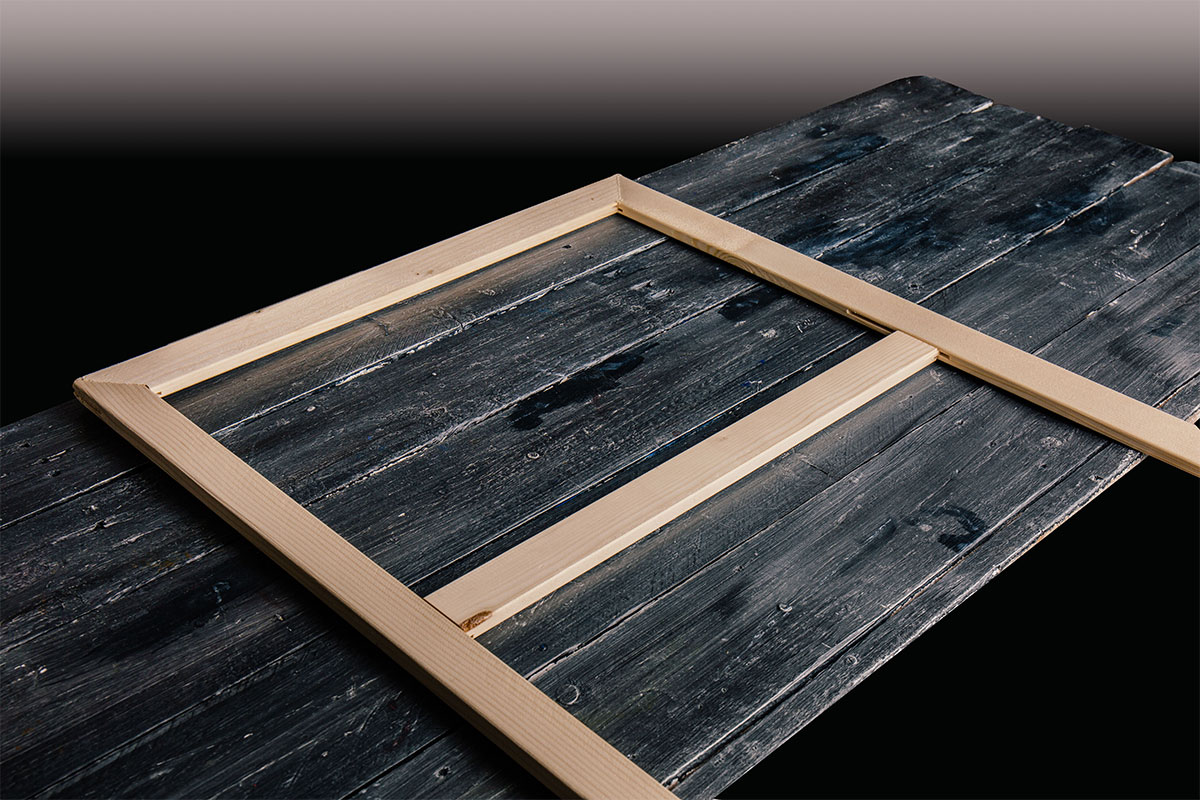
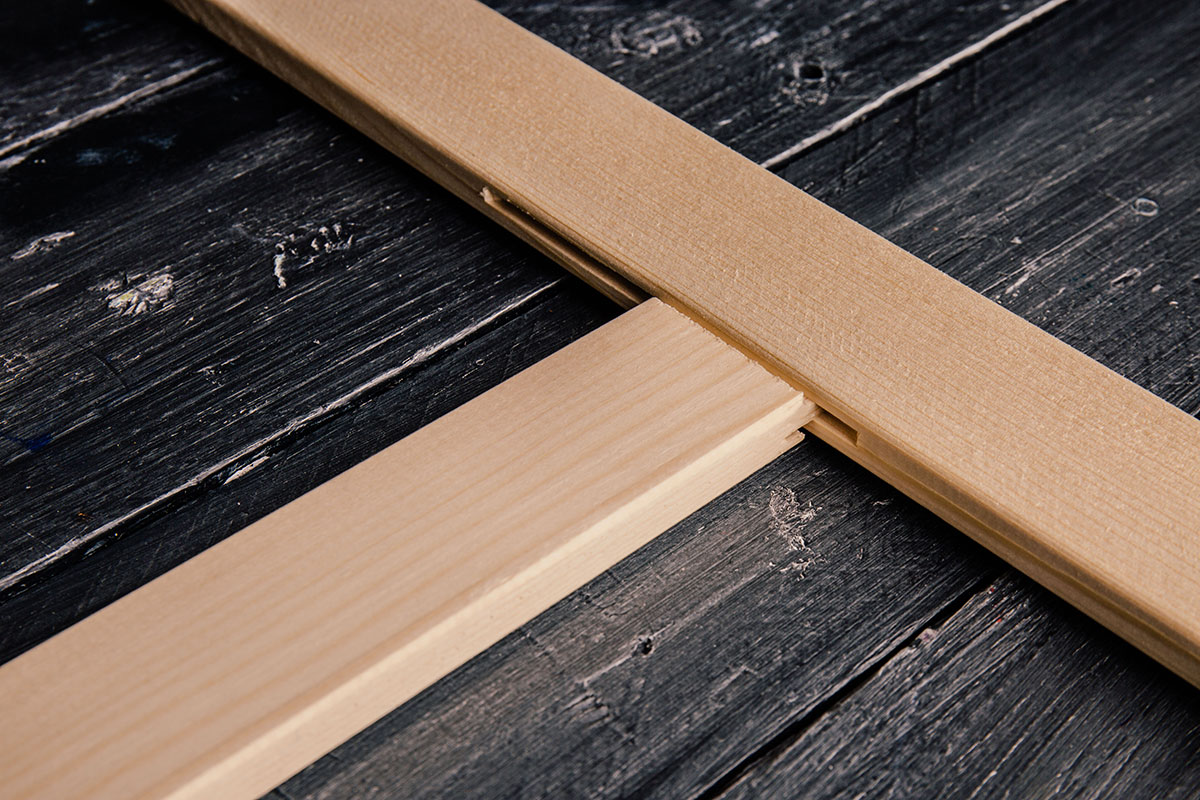
For the 43mm Professional stretcher bars the use of a centre bar is recommended when any side of the canvas exceeds 100cm. Sizes starting at 80cm have centre bar slots. The 43mm bars are able to accommodate two crossing bars that pass one over the other for added strength (on two planes).


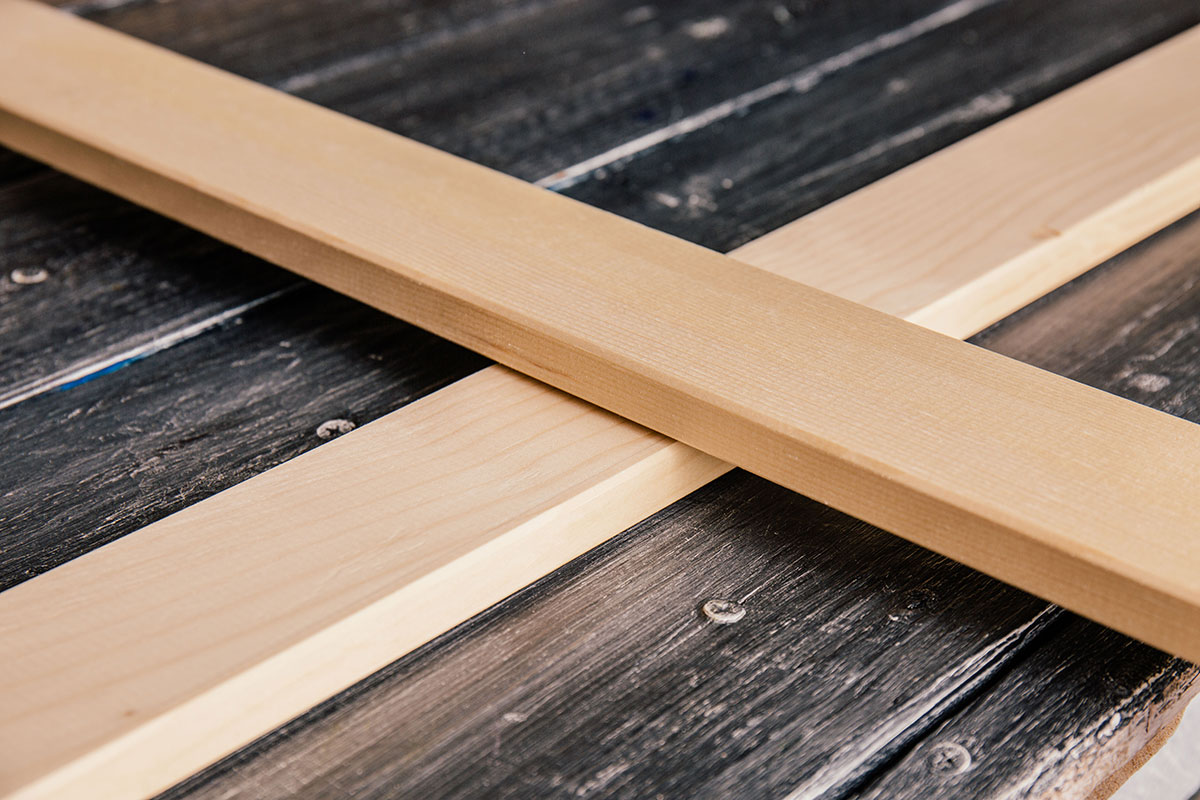
The Museum 20mm bars will accommodate a centre bar or a cross bar pair. Sizes starting at 50cm have centre bar slots. Centre bars 100cm and larger will have notch cut in the centre that allows two to be used in one layer (on the same plane) as the notched fit together.
The Museum 35mm bars will accomodate a centre bar or a cross bar pair. Sizes starting at 60cm have centre bar slots. Centre bars 100cm and larger will have notch cut in the centre that allows two to be used in one layer (on the same plane) as the notches fit together.
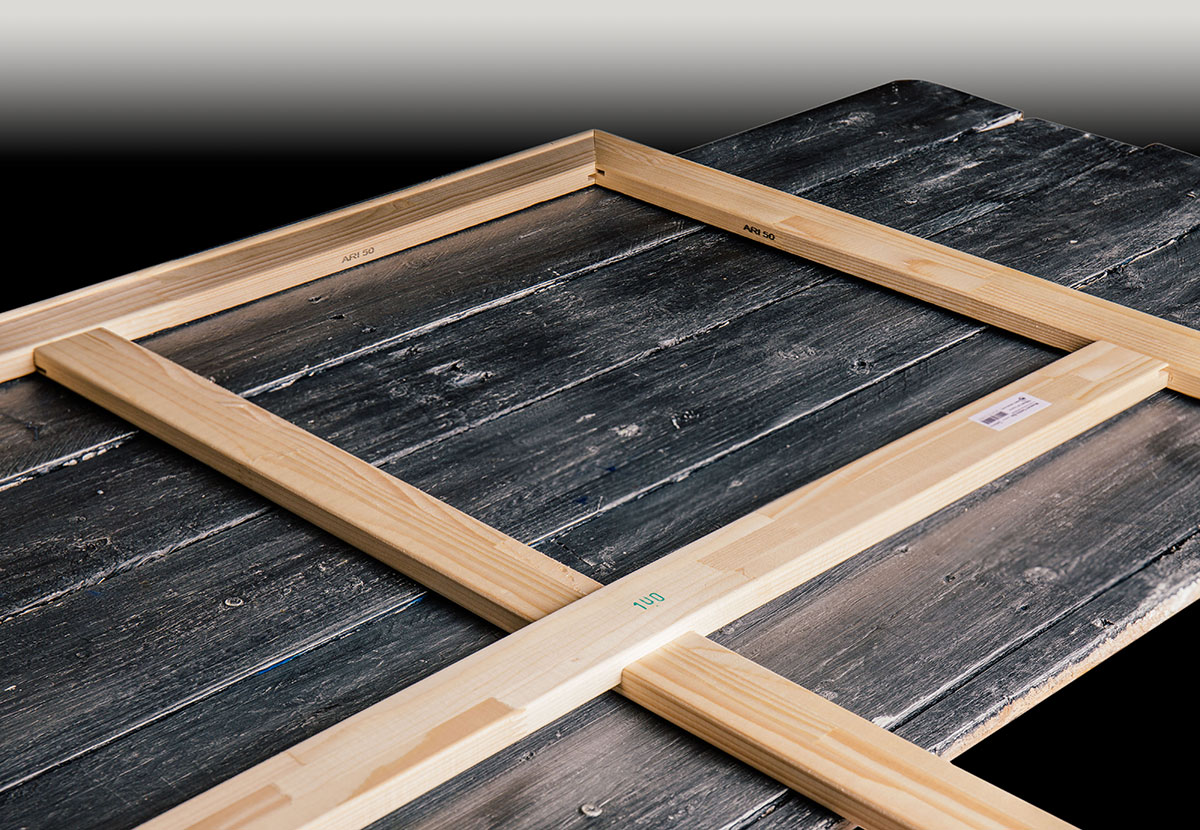
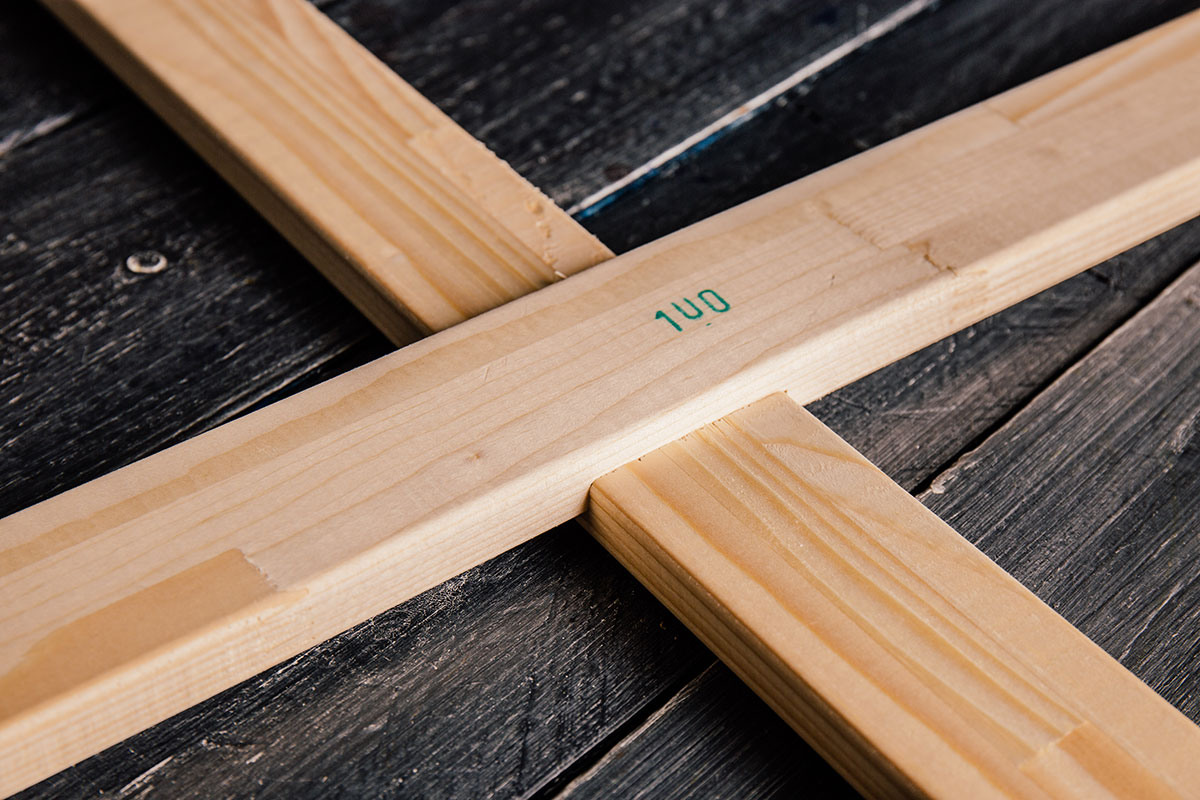
Museo Alu-Pro bars will accomodate a centre bar or a cross bar pair. These are called primary cross bars (a single piece plus the necessary primary hardware connectors) and secondary crossbars (in two pieces plus the necessary secondary hardware connectors). They are only needed for very large sizes unless you wish to use then as handholds.

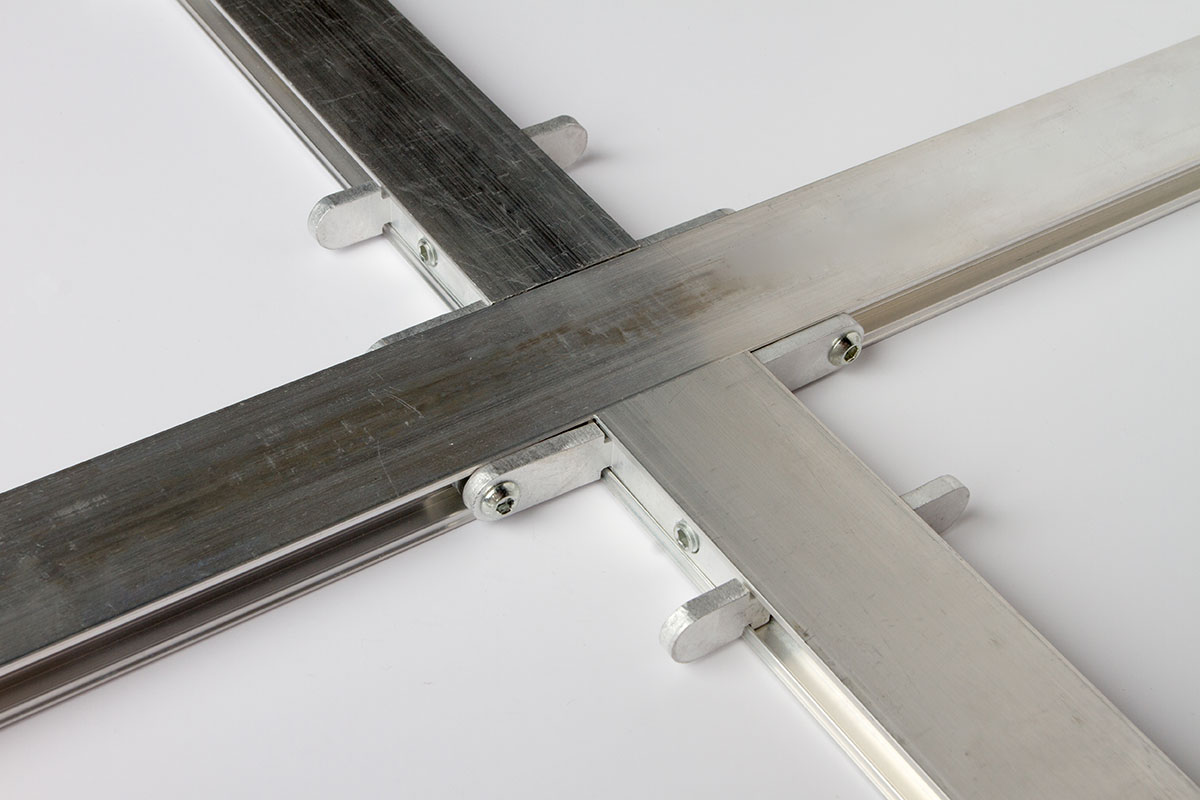
The Length of the Centre Bar
Centre bars are smaller than the stretcher bars because they fit inside the rectangle, whereas the stretcher bars are sized based on the outside of the rectangle they produce. But we have already figured out the sizes that fit and they are labelled as the size needed for the rectangle, rather than the actual length of the bar. So a 50cm centre bar is not actually 50cm long itself, rather it is made to fit inside a 50cm stretcher bar.
Corner tightening wedges
Another name for the little triangular wooden pieces that come with your stretcher bars are keys.
New canvases often need to be tightened and old paintings can become loose over time and will need to be made more taut with corner tightening wedges.
If you are stretching a canvas – there is a space in the wooden centre bars for smaller wedges to be tapped in if the centre bar needs tightening, so there is a front and back orientation to the centre bar to ensure the slot is facing the back.
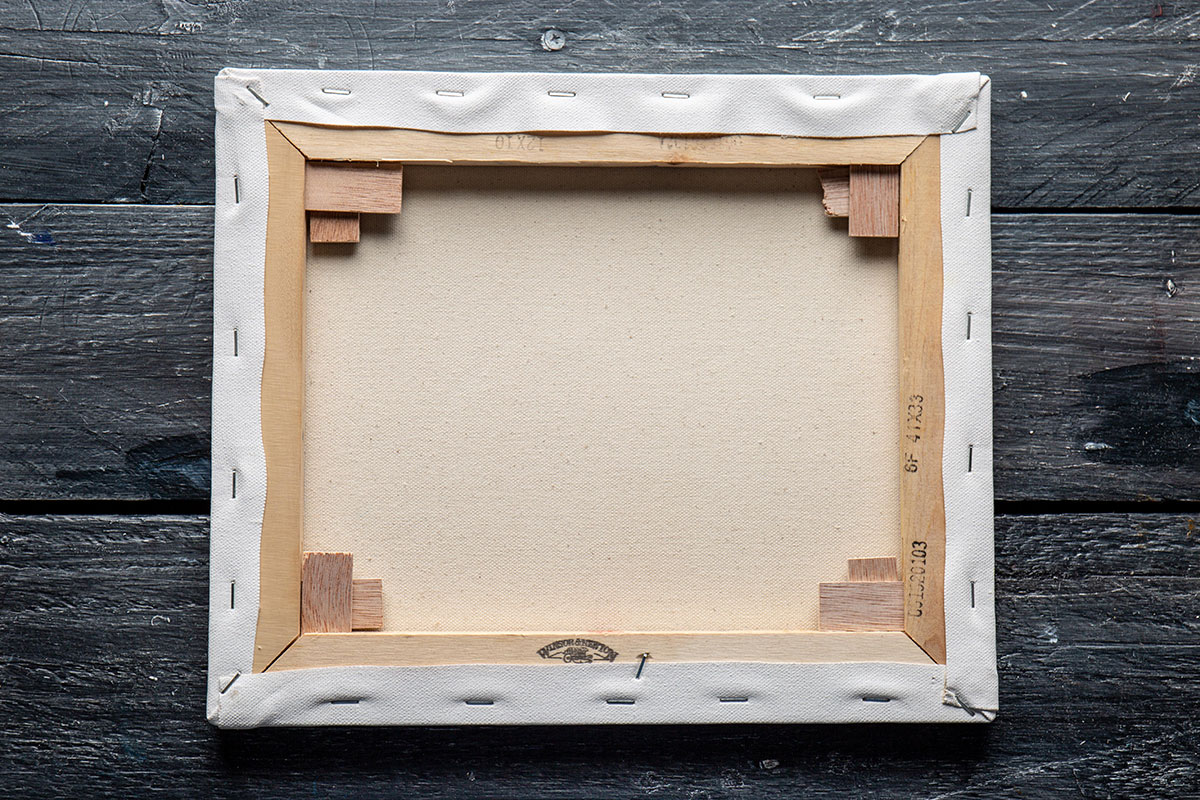
How to assemble the stretcher bar frame
Read about assembling our ranges of wooden stretcher bars in this earlier post: How To Assemble Stretcher Bars for Canvas.
Read about assembling our ranges of Alu-pro stretcher bars in this earlier post: How To Assemble Stretcher Bars for Canvas.

Written by Julie Caves
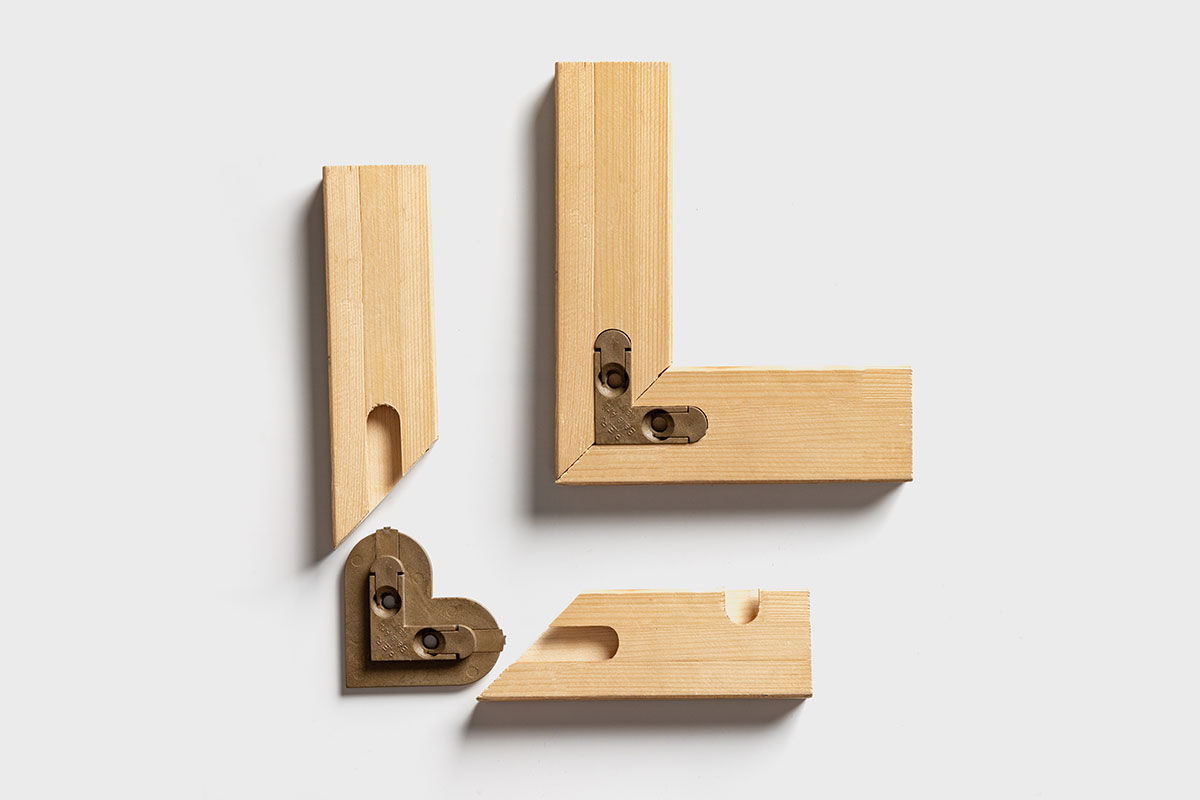


Leave a Comment